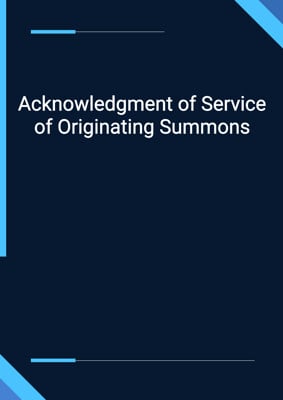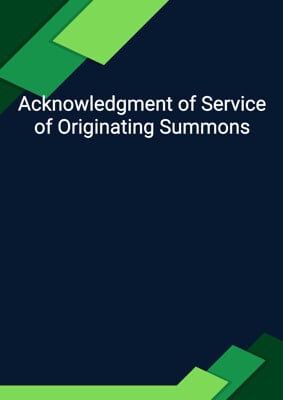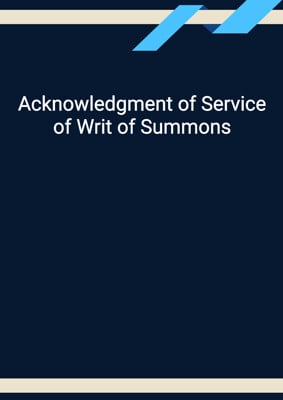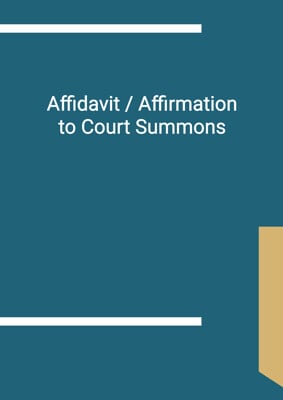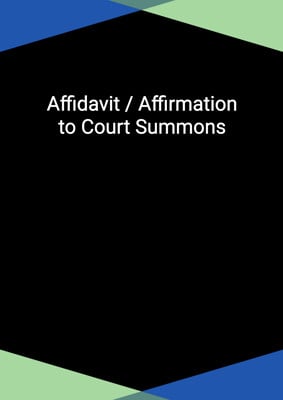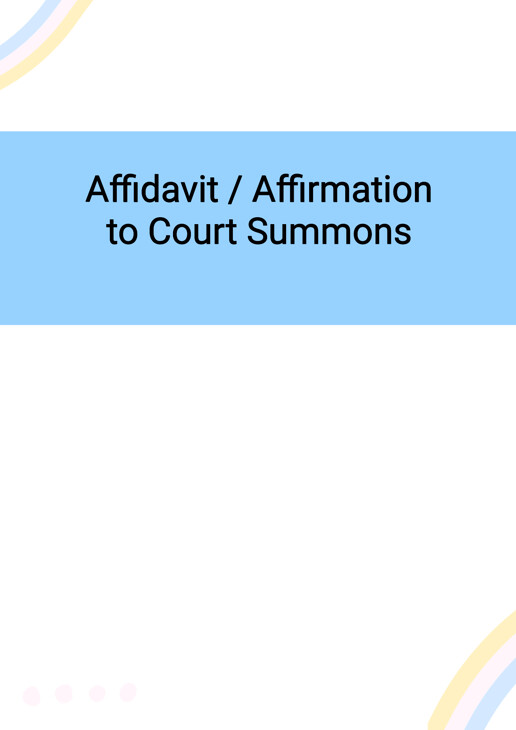
Affidavit / Affirmation to Court Summons
Plaintiff
The Affidavit / Affirmation in support of a court summons/application is a document filed by the Plaintiff in support of the originating summons. It names the issue (i.e. the original summons) that is being supported, along with the name of the party who filed the original summons.
How to Tailor the Document for Your Need?
01
Create Document
Fill in the details of the parties. You can click the "Fill with Member’s Information" button to complete it with information saved to your account.
02
Fill Information
Please fill in any additional information by following the step-by-step guide on the left hand side of the preview document and click the "Next" button.
03
Get Document
When you are done, click the "Get Document" button and you can download the document in Word or PDF format.
04
Review Document
The document should be signed by the authorised signatory (or directors of a company) and witnessed to complete the formality.
Document Preview
Document Description
The document titled 'Affidavit / Affirmation to Court Summons' is a legal document that is used in court proceedings. It is an important document as it serves as a sworn statement or affirmation by the plaintiff in support of the summons filed. The document is divided into sections, each serving a specific purpose.
The entire document starts with a header that includes the court details and the case number. It then proceeds with the introduction of the parties involved, namely the plaintiff and the defendant. The document further provides two options, 'affirmation' or 'affidavit,' depending on the choice made by the plaintiff.
If the plaintiff chooses 'affirmation,' the document continues with the affirmation of the plaintiff. It states that the plaintiff solemnly affirms the following facts, which are true to the best of their knowledge, information, and belief. The affirmation is followed by a statement, and the plaintiff affirms the truthfulness of the contents of the affirmation.
On the other hand, if the plaintiff chooses 'affidavit,' the document proceeds with the affidavit of the plaintiff. The plaintiff makes an oath and states that the facts deposed to in the affidavit are true to the best of their knowledge, information, and belief. Similar to the affirmation, the affidavit includes a statement, and the plaintiff makes an oath regarding the truthfulness of the contents of the affidavit.
Both the affirmation and the affidavit sections end with the signature of the plaintiff, the date, and the presence of a commissioner for oaths, notary public, justice of peace, or judiciary.
In summary, the 'Affidavit / Affirmation to Court Summons' document is a crucial legal document used in court proceedings. It provides a detailed introduction of the parties involved and offers two options, affirmation or affidavit, for the plaintiff to choose from. The document includes the affirmation or affidavit itself, along with a statement and the plaintiff's signature. It is essential for the plaintiff to carefully review and complete the document in accordance with their chosen option and the specific requirements of the court.
How to use this document?
1. Choose between 'affirmation' or 'affidavit' based on your preference and the specific requirements of the court.
2. Fill in the court details and the case number at the beginning of the document.
3. Introduce yourself as the plaintiff and provide your address.
4. If you choose 'affirmation,' solemnly affirm the following facts, which should be true to the best of your knowledge, information, and belief.
5. If you choose 'affidavit,' make an oath and state that the facts deposed to in the affidavit are true to the best of your knowledge, information, and belief.
6. Include a statement that supports your case and provides relevant information.
7. Sign the affirmation or affidavit section, along with the date.
8. Ensure the presence of a commissioner for oaths, notary public, justice of peace, or judiciary when signing.
9. Review the completed document to ensure accuracy and truthfulness.
10. File the document in the court of jurisdiction as per the specified procedures and deadlines.
Note: It is crucial to seek legal advice or consult with an attorney to ensure compliance with the specific requirements of the court and to understand the implications of the document in your case.
Not the right document?
Don’t worry, we have thousands of documents for you to choose from:
